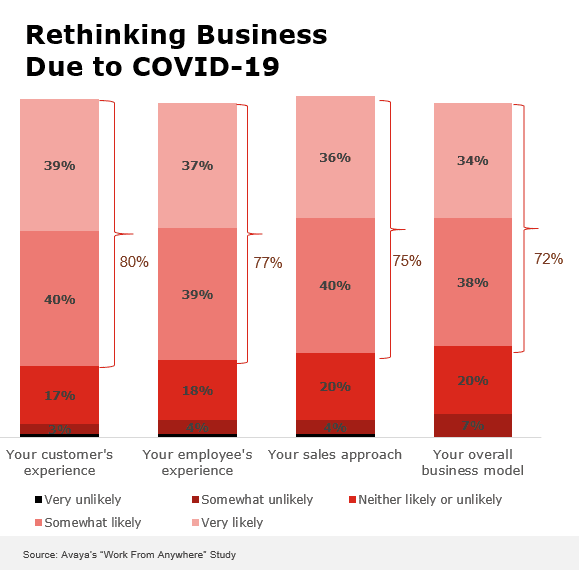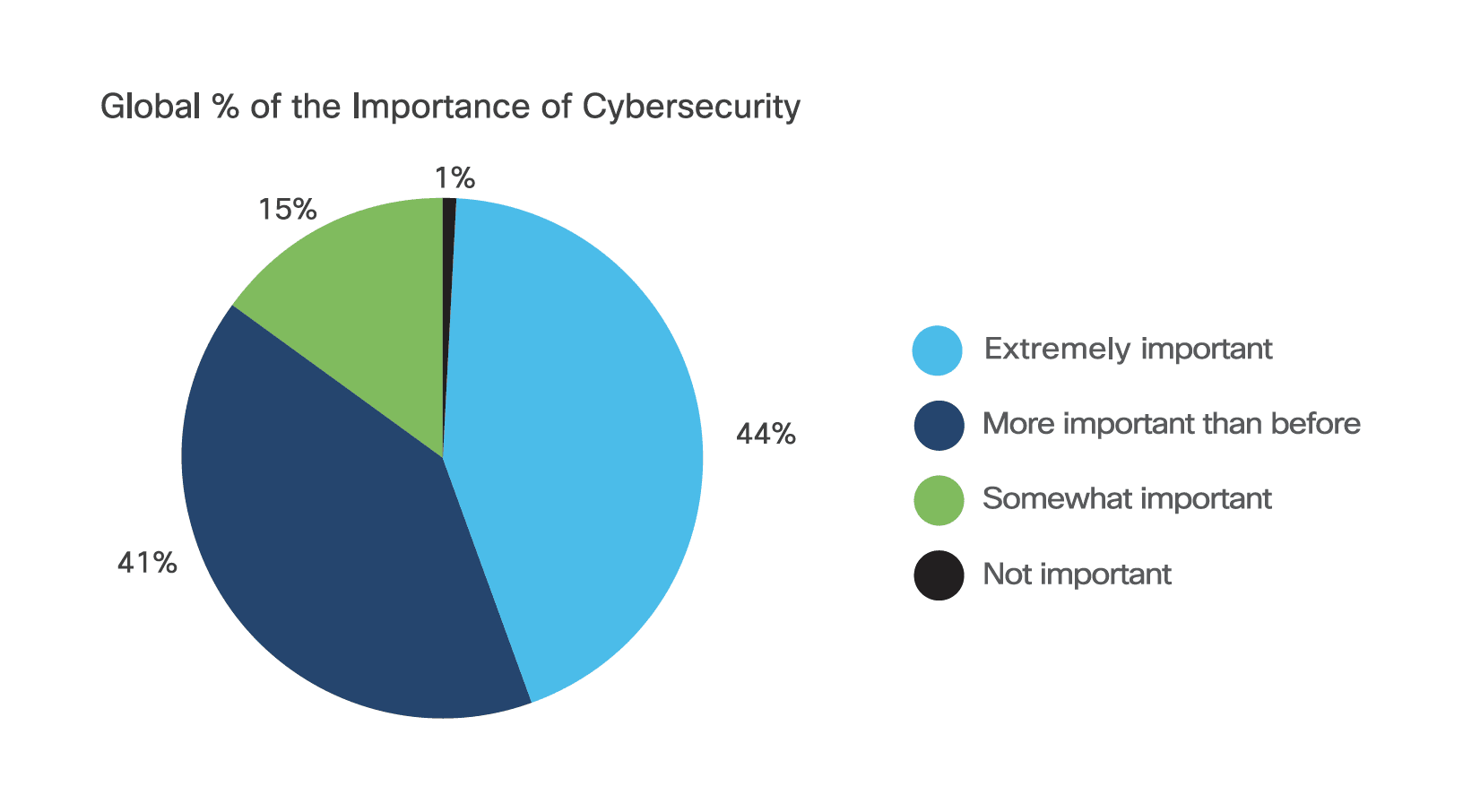A few months ago, getting the workforce back into the office was a key conversation and focus for businesses as they head into 2021. For many companies, this goal has since been abandoned as we usher in the era of “work from anywhere.” Work from anywhere means businesses are looking to support their employees that may never come back into the office, those that might want to work five days a week in the office, or even those who chose their local coffee shop as their new place to work.
A recent study by communications and collaborations giant Avaya supports this notion as it found that nearly 72% of U.S. businesses have been rethinking how they work and 58% feel remote working due to COVID-19 is enabling them to hire a more distributed workforce. This means employees don’t all need to be located in central areas where their employer has an office building.

Enter the new future of work. The remote evolution has happened – it’s in the past. Back in March, businesses were forced to adopt remote models at a rapid pace and embrace the disruption or risk failure. The new future of work revolves entirely around how to support hybrid or distributed workforces with the right technology and culture so that businesses can thrive.
Here are five ways businesses can support the New Future of Work.
Examine your Workday Structure
DropBox announced in October that they were instituting a “non-linear workday” structure. As their workforce was becoming more distributed, they saw a crucial need to balance collaboration with individual preferences and prioritize impact vs. hours worked.
Businesses must recognize this change will not be made perfect overnight, but acknowledging different working styles and preferences fosters a positive, inclusive environment for employees. Now is the time to make difficult, but welcomed changes to workday structures to accommodate global employees and new ways of working. A good way to start these conversations is through soliciting feedback from employees – how do they want the new future of work to look at your company, and what are different workday structures that might support that?

Think Employee-First
At Hotwire, we’ve had virtual escape rooms, cooking classes, bingo nights and are even hosting a virtual murder mystery party to celebrate Halloween. Some people might roll their eyes, wonder why businesses need to put time and money towards virtual work events, but these in fact are crucial moments that show employees that you’re there for them and support their happiness when they’re stuck at home for months on end.
Beyond those moments that give your employees a relief from the workday, employee experiences for remote tools are key. Avaya’s survey found 57% of businesses reported some struggle with remote communication and fatigue and as a result, 3 out of 4 businesses say they are more focused on employee and team communication. Conduct remote tool refreshers, create guides for mindful remote working and encourage policies like “no meeting Fridays” or active meetings where employees are encouraged to go outside for a walk during internal meetings.
Zoom, another communications behemoth that has capitalized on remote work through its videoconferencing platform, is embracing this notion as they announced new products and features for their platform at this year’s Zoomtopia event. These new features include Zapps, which are apps that integrate with Zoom’s videoconferencing platform to make the user experience smoother and increase productivity for remote employees. A happy employee leads to a happy customer – through prioritizing employees, you in-turn reward your customer with an enhanced experience.
Encourage Effective Communication
Our vice president of IT recently brought up a term I had never heard, but have been searching for since the beginning of our all-remote journey: Netiquette. Netiquette, rules and norms for interacting remotely, is extremely important to the new future of work and goes hand-in-hand with the employee-first mindset.
Netiquette is key to effective communication. Here are a few that come to mind: don’t schedule meetings that can be had over email, be respectful with the slack @here feature (does everyone really need to see your message?), don’t hop from tool to tool discussing the same topic (confusing!), and be as precise and pointed about your communication as possible.
By encouraging netiquette and effective communication among your employees, you’ll in-turn find employee fatigue decreasing and positive use of technology tools and remote culture increasing.
Prioritize Security
Both your employees and your customers need to feel secure during this global business shift. A new report from Cisco revealed 85% of respondents globally said that cybersecurity is extremely important or more important than it was before the pandemic. These days, an employee’s entire existence at work revolves around digital interactions and touchpoints. To feel secure is to know you can do your job and have the tools and knowledge needed to ward off any cyber threats – this starts at the executive level and trickles down.

Via Cisco
Security policies should be communicated outwardly to employees and baked into the culture of an organization. This not only protects your employees from cyber threats, but your customers too. As we continue remote work, the continuity, strength and health of your business depends more on cybersecurity now than ever before.
Don’t Limit Your Next Steps
“Reimagining business” is what the future of work is all about. Did we think banks would be able to support fully remote models? No. Did we think global businesses would go remote overnight? Did we think entire hundred-story office buildings would be abandoned for six-plus months at a time? No and no. What the New Future of Work embraces is that not only just life is unplanned – work is unplanned, and businesses should be able to embrace these new ways of working knowing they might stumble a few times.
Don’t limit your business to yesterday. COVID-19 taught businesses what was wrong with their processes. This pandemic could give your business an opportunity to change what wasn’t working into something that works – lack of talent in a certain geographical area, limited use of AI technologies, not enough cloud-based tools.
DropBox put it eloquently as they announced their non-linear workdays: “We’re living through a challenging time. But we believe it brings an opportunity to redesign the way we work for the better. While we think Virtual First is the right choice, it’s new for us and we know we may not get it 100% right immediately. So we’re committed to maintaining a learning mindset—to staying open to new information and feedback and iterating over time until we do.”
The New Future of Work is here, but we have a lot of learning to do before we get it right.
Check out other tips and insights on the Remote Evolution here.
